SAP S/4HANA is the new intelligent business suite from SAP. The ERP software (ERP = Enterprise Resource Planning) supports all business processes of a company and technologically replaces the previous Enterprise Core Components (ECC) of SAP Business Suite.
The name SAP S/4HANA means SAP Suite for (4) HANA, indicating that the solution runs exclusively on the SAP HANA in-memory database. The 4 stands for the fourth generation of SAP ERP systems. SAP S/4HANA is available both as an on-premise version and in the cloud (private or public cloud).
With SAP S/4HANA and SAP Fiori, SAP delivers modern user interfaces. Fast and intuitive apps enable a better user experience (UX). At the same time, the data model is significantly simplified thanks to the underlying in-memory database, which reduces the amount of storage required and enables significantly faster queries.
SAP S/4HANA includes a number of standardized business processes that companies can use:
Purchase-to-pay
Plan-to-produce
Human Capital
Controlling
Enterprise Asset Management
Project Management
Modern user interfaces with SAP Fiori and improved user experience (UX)
Simplified data model
Easy customization and modernization of business processes
Faster reporting and analysis
Relief for users through artificial intelligence (AI) and machine learning
Real-time analysis even of large amounts of data
Reduced total cost of ownership in terms of deployment, maintenance and number of servers
The in-memory technology of the HANA database brings significant performance improvements. As a result, large volumes of data can be processed in near real time.
SAP Fiori replaces the old SAP GUI user interfaces and offers personalizable and intuitive apps. Notifications and decision support also improve the user experience. Thanks to the role-based concept, users collaborate more efficiently − even on mobile devices.
Reusable services facilitate the integration of artificial intelligence into business processes. Employees have more options for automating tasks and accessing contextual information.
|
|
With our Transformation Assessment for SAP S/4HANA, you are optimally prepared for the targeted migration to SAP S/4HANA on-premise or SAP S/4HANA Cloud. We work with you to develop a fact-based decision-making basis for your successful ERP transformation, a customized roadmap and a recommendation for the subsequent implementation.
 Project management
Project managementThe implementation of SAP S/4HANA is usually a large project. Depending on the size of the company, the roll-out can take several years. Preliminary projects, for example for the introduction of SAP Business Partner, are often necessary and must be completed before the actual migration to SAP S/4HANA. Reaching these milestones and successfully completing the overall project is only possible with the help of far-sighted project management.
 Change management
Change managementThe migration to SAP S/4HANA is not only a technical upgrade of the ERP system, but also necessitates a realignment of business processes. The extensive changes that accompany the introduction of SAP S/4HANA must be supported by the entire organization and moderated accordingly. Efficient change management ensures that employees embrace the change and that the full benefits of SAP S/4HANA can be realized.
 Cost comparison
Cost comparisonAs with any large IT project, costs play an important role in the implementation of SAP S/4HANA. Here, it is important to evaluate various system implementation alternatives at an early stage in terms of a cost-benefit comparison for the company. In addition to the costs for the introduction itself, the operating and license costs must also be considered in this context.
 Quality assurance
Quality assuranceQuality assurance plays a key role in ensuring that you can make the most of the benefits of SAP S/4HANA and that the implementation brings the improvements you had hoped for. Among other things, this includes extensive testing of the solution to ensure a smooth go-live.
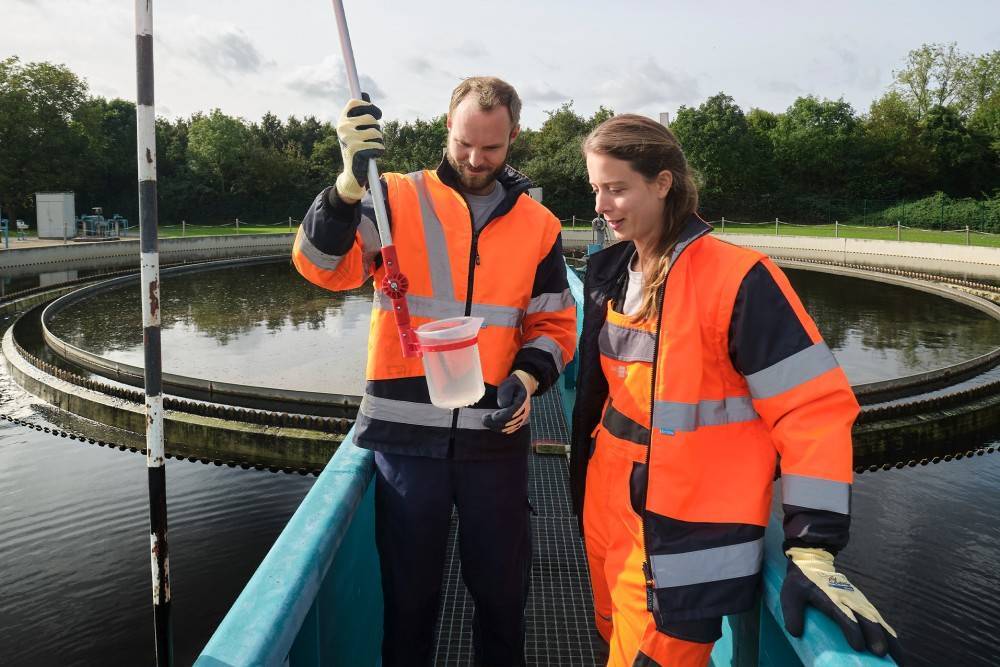
Erftverband has successfully converted to SAP S/4HANA. This was preceded by a detailed preparation phase, which focused on analyses, cleansings, and several test conversions, among other things. This approach helped to avoid unforeseen surprises during the system conversion. Erftverband drew on the experience and expertise of IBsolution for the SAP S/4HANA implementation.

With the introduction of SAP S/4HANA, Schluchseewerk AG, one of the largest operators of pumped storage power plants in Germany, has fundamentally modernized its IT landscape. As a project partner, IBsolution provided the company based in Laufenburg in southern Baden with comprehensive support.

Two key challenges for companies during SAP S/4HANA implementation have emerged: the complexity of the existing ERP landscape and the lack of collaboration among the teams involved. Those who fail to coordinate collaboration between the various departments and divisions and involve all stakeholders are wasting valuable resources and creating unnecessary hurdles on the path to SAP S/4HANA.
Those who set the right course when planning and preparing for the SAP S/4HANA transformation will not only benefit from a smooth transition, but also from a harmonized process landscape and an IT environment that will help to massively increase digital value creation. With our detailed checklist, project managers can ensure that they take all relevant aspects into account and prepare the SAP S/4HANA transformation in the best possible way.
Especially companies that use older SAP ERP systems often prefer to continue running SAP S/4HANA on their own servers. The main reason for this is the system landscape that has grown over years or even decades and often includes in-house developments. These cannot be migrated when switching to the cloud. Therefore, companies with such an initial situation often opt for a system conversion (brownfield approach). In contrast to the cloud, the company manages the entire infrastructure and applications itself. This approach is suitable, for example, for large companies with complex business processes.
Unlike SAP S/4HANA on-premise, the company does not operate SAP S/4HANA Cloud itself. The operation and maintenance of the infrastructure are outsourced to a service provider. SAP offers the deployment of SAP S/4HANA Cloud in a Public Edition and in a Private Edition.
SAP S/4HANA Cloud Public Edition is provided as software-as-a-service (Saas). Own programming is therefore not possible. The advantages are high scalability and a low TCO, because you only pay for the capacity you actually use. Downtimes for release changes are a thing of the past, while at the same time companies always benefit from the latest innovations such as artificial intelligence (AI), machine learning and predictive analytics with quarterly release changes.
SAP S/4HANA Cloud Private Edition corresponds to the hosting principle, in which the company has its own server at its hyperscaler. The hyperscaler also takes over the maintenance of the server. In contrast to SAP S/4HANA Cloud Public Edition, the company can make changes to the code and implement its own modifications. Investments made in the existing SAP system are thus retained. The company benefits from the lower costs in the cloud and can at the same time retain its existing processes and data.
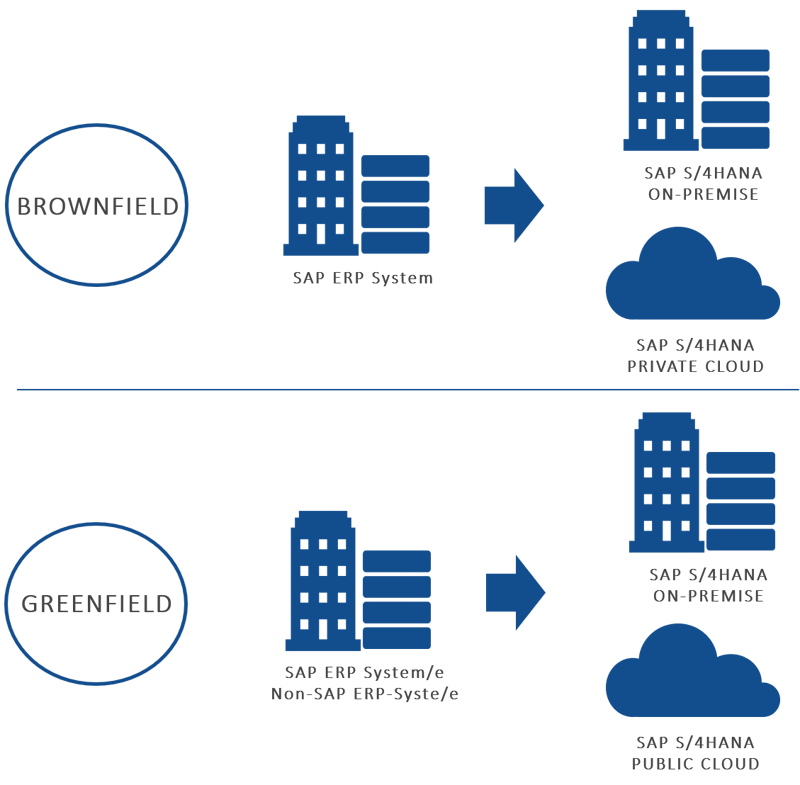
ERP systems grow over the years of their use and become increasingly complex. Therefore, it may make sense to replace the old system with a completely new ERP system. The greenfield approach is often more costly than a system conversion, but it offers the opportunity to question the old processes and, if necessary, to completely rethink them.
During system conversion, the existing SAP ERP system is converted to SAP S/4HANA. Data and settings remain in place, as do the previous processes. One advantage of the brownfield approach is that it usually requires fewer resources for the switch to SAP S/4HANA than a new implementation. However, some preliminary work has to be done to minimize the technical difficulties, for example due to different data models.
The greyfield implementation is a combination of the greenfield and brownfield variants. A new system is set up, but parts of the existing data are migrated if they are still needed. The goal is to simplify the existing ERP landscape by unifying the systems or outsourcing individual business processes.

The aim is to complete the SAP S/4HANA implementation in the scheduled time, within the calculated budget and with high quality results. To achieve this and avoid any unpleasant surprises during the course of the project, companies should prepare the implementation of SAP S/4HANA carefully.

There are good arguments for companies to switch from their previous ERP system to SAP S/4HANA. For the changeover to succeed, they must be aware of the fact that SAP S/4HANA has an impact on almost every business area. Accordingly, the approach should be holistic. A purely technical perspective falls short and does not lead to the desired results.

The modern business world is characterized by a rapid pace of change. The social, economic and technological conditions for companies are changing at an unprecedented pace. Digital transformation creates scope for optimizing processes, establishing new business models and securing the future of the company.
 SAP Business Partner data model becomes mandatory
SAP Business Partner data model becomes mandatoryThe implementation of SAP Business Partner (Customer Vendor Integration - CVI) is mandatory for the switch to SAP S/4HANA and must take place before the system conversion. With our Harmonization Package for SAP Business Partner you realize the changeover from the classic to the new data model at a fixed price.
 SAP New General Ledger
SAP New General LedgerSimilar to SAP Business Partner, SAP is also making SAP New General Ledger (New GL) a prerequisite for SAP S/4HANA. Compared to the classic general ledger, the New GL offers a number of new functional enhancements. New fields have been added to the data structure and it can be further expanded with customer-specific fields.
The Migration Package for SAP S/4HANA General Ledger helps to introduce the New GL pragmatically and efficiently on the basis of an existing system. After the migration to SAP S/4HANA, there is then only one journal table based on the structure of the New GL.
 Adjustments to authorizations
Adjustments to authorizationsThe architecture and database structure of SAP S/4HANA also affect authorization management. Working with Fiori apps requires changes to roles and the associated authorization objects. In the first step, an authorization check provides information about where exactly your company needs to start in this regard.
 What happens with your custom developments?
What happens with your custom developments?The switch to SAP S/4HANA offers the ideal opportunity to review existing customer-specific developments to determine whether they are still needed or compatible with SAP S/4HANA. Our 5 golden rules give you valuable advice on how to bring your custom developments to SAP S/4HANA.

We provide an overview of why authorization management is so fundamental when switching to SAP S/4HANA, what specific challenges are associated with it and what long-term benefits companies can expect.

In the context of the changeover to SAP S/4HANA, companies face a particular challenge with regard to their custom developments: Many customer-specific extensions cannot be transferred one-to-one to SAP S/4HANA – for various reasons.

Before you can migrate to SAP S/4HANA, there are a few mandatory tasks to complete. One of these is the introduction of SAP Business Partner as the central master data object for all natural and legal persons with whom a company has a business relationship.
SAP S/4HANA creates the technological prerequisites for future innovations. Intuitive user interfaces, a significantly simplified data model, real-time enterprise control, and higher performance thanks to in-memory technology are just a few examples of the possibilities SAP S/4HANA offers to help companies stay competitive in the digital age and set themselves apart from the competition. Each new release of SAP S/4HANA includes further innovative functionalities based on state-of-the-art technologies such as artificial intelligence and machine learning.
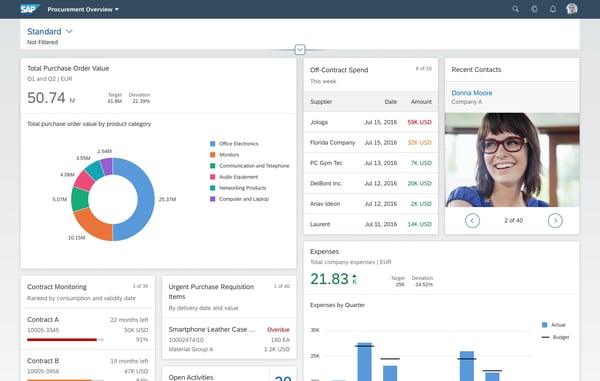 Real-time analytics with SAP Embedded Analytics
Real-time analytics with SAP Embedded AnalyticsThanks to the high-performance SAP HANA database, real-time analytics in SAP S/4HANA can also be performed in day-to-day operations and displayed in analytical Fiori apps. SAP already delivers ready-to-use standard apps for each business area, so you can start using them right away.
 SAP S/4HANA Service
SAP S/4HANA ServiceSAP S/4HANA Service offers a wide range of capabilities tailored to the needs of service organizations – including customer service, contract management, and service fulfillment. By leveraging real-time data, SAP S/4HANA Service accelerates decision making and improves efficiency.
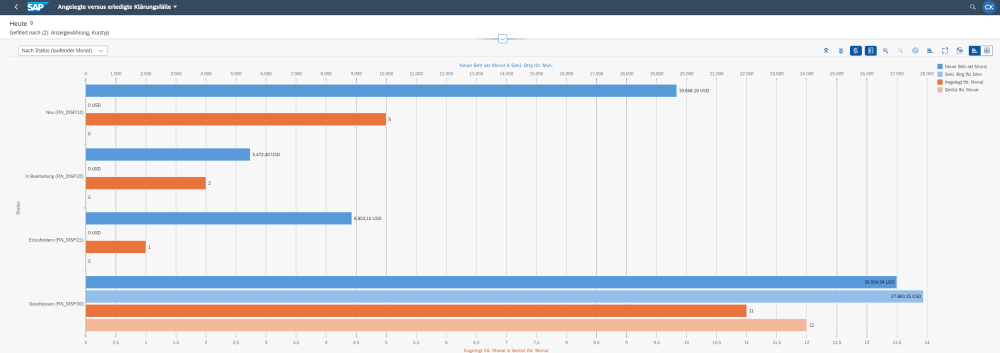 SAP Financial Supply Chain Management
SAP Financial Supply Chain ManagementFinancing and invoice processing are among the largest cost blocks in finance. SAP Financial Supply Chain Management (FIN-FSCM) targets all financial and information flows within a company and between business partners. The portfolio includes applications for electronic account and invoice display, customer complaint processing, credit management, and cash flow optimization.


SAP offers special Fiori apps for finance that help to optimize financial processes and reduce manual activities. Such finance apps can, for example, provide real-time data to support financial analyses or automate approval workflows. This results in faster processing of financial transactions and greater transparency in financial processes.

The interaction of SAP Credit Management, SAP Dispute Management and SAP Collections Management ensures holistic receivables management in SAP S/4HANA. The seamless integration of the three modules helps to increase operational efficiency in accounts receivable accounting and optimize the financial value chain.

The switch to SAP S/4HANA requires the implementation of SAP Credit Management. The classic credit management module FI-AR-CR no longer exists under SAP S/4HANA. The main purpose of SAP Credit Management is to identify default risks at an early stage and mitigate financial losses.

As the latest ERP generation from SAP, SAP S/4HANA brings with it numerous innovations and improvements. What also changes with SAP S/4HANA is the way the system can be extended and tailored to individual user requirements.

SAP Dispute Management is used to process receivables-related dispute cases. If a business partner arbitrarily reduces agreed payments, companies must follow up and clarify the case.



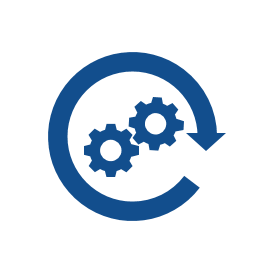


Simply complete the form and submit it. We will contact you as soon as possible.